Running out of adjectives that described speed and thrill seemed like a genuine concern when I began writing this review.
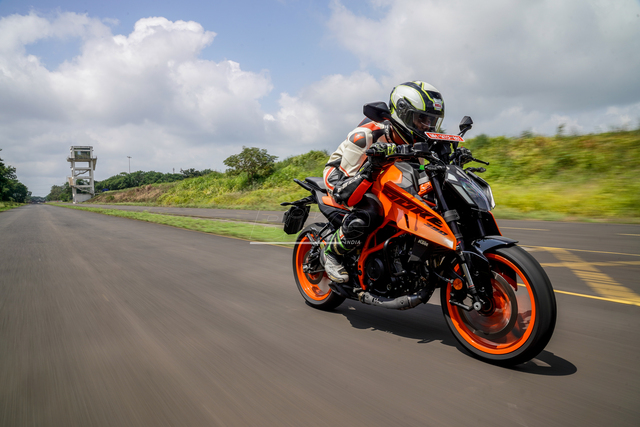
Story: Joshua Varghese
Photography: Sanjay Raikar
The KTM 390 Duke shook the foundations of what Indian motorcycle enthusiasts believed was accessible performance. The first generation of this machine can be aptly described as rabid and thrilling, then, in comparison, the second generation seemed more sensible. Now, in 2023, KTM have brought us the most comprehensive upgrade in the 390 Duke’s life-cycle. Could this be the one that reaffirms the faith of KTM aficionados and also ropes in others who are orbiting around the brand? We sampled it on the track and road to arrive at a conclusion.
As always, the Dukes share the family design and this iteration is the most aggressive version of the 390 yet. The cowls are wider and sharper, the lights are more menacing, and “minimal” perfectly describes the packaging of the powertrain. Such an extensive makeover is possible because the fuel-tank is larger (15 litres) and the frame is new. The main trellis frame still exists but the mounting points have been changed and its dimensions have been revised; which is why the monoshock, which was originally centrally mounted, is now offset to the right-hand side. The subframe is an all-new die-cast aluminium unit that is not only robust and minimal but also negates the need for any cowls at the rear, one less thing to worry about in the long term.
Eagle-eyed observers will also notice that the front brake disc rotor has been shifted to the right-hand side of the wheel. Of course, that is not all. The wheels themselves are new. As on the latest RC390, the discs are directly mounted on to lighter rims. Hollow axles and the lack of disc carriers further reduce unsprung weight. KTM’s choice to dump the side-slung silencer and revert to an under-belly exhaust is appreciated and it revives this motorcycle’s raw appeal. What is not that obvious, but certainly most welcome, is the increase in ground clearance; 183 millimetres as opposed to the 151 mm of the previous generation.
The instrument console is the most sophisticated unit I have seen in this segment and it displays a comprehensive suite of information, including useful real-time data such as range and fuel efficiency. Riding modes on offer include Street, Rain, and Track. Navigation through the menus is simple thanks to the switch-cube. The switchgear is all new and the motorcycle also gets adjustable levers. They raise the bar in terms of convenience and appear to be of better quality than those on the outgoing model. Revised ergonomics allowed me to find a comfortable riding position quickly and it did not put any undue stress on my body. After ripping around on the track and a brief ride in traffic, I must say that this Duke offers an undemanding yet dialled-in riding experience.
The engine has been significantly overhauled too. It is still a liquid-cooled, DOHC, single-cylinder unit but the clutch cover bears a new legend, “LC4c”. That is because a longer stroke has taken the displacement up to 399 cc. As a result, we now have the most powerful 390 Duke yet; 46 hp at 8,500 rpm and a peak torque of 39 Nm at 6,500 rpm should be enough to make enthusiasts go weak in the knees. KTM claim that it goes from 0 to 60 km/h in 2.4 seconds and touches the 100-km/h mark in 5.9 seconds; the final gearing has not been revised. Although the motorcycle is notably easier to ride slowly as compared to its predecessors, one needs at least 60 km/h (indicated) to use the sixth gear. Now we move on to what every rider expects the Duke to do.

With up to 80 per cent of the torque available early in the rev-range, the new 390 begs to be ridden fast. In Track mode, the throttle response is crisp and linear. A twist of the wrist is rewarded instantly by a generous amount of power that propels this machine forwards with purpose and, as it crosses the 5,000-rpm mark, there is a small surge that sends it hurtling through space even faster. With a good exit off the corner, yours truly was able to see 163 km/h (indicated) at the end of the straight, just shy of the red-line. Picking up speed is effortless, dialling in throttle at the apex is intuitive, and taming the motorcycle with the right wrist is easier than ever. The addition of an up-and-down quick-shifter further refines the purity of the new 390’s purpose.
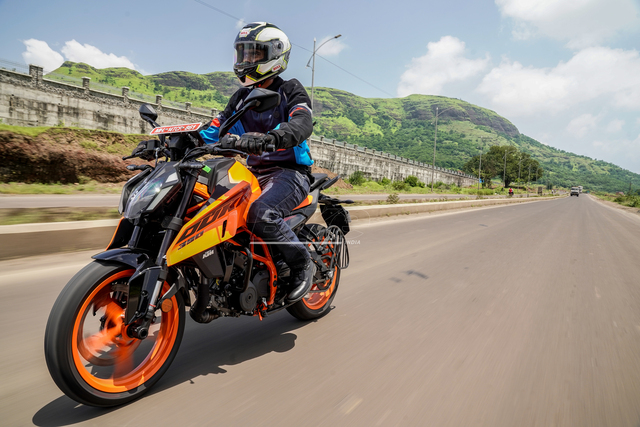
On public roads, when riding flat out is not an option, I did find using the clutch lever more comforting; the action is light and easy. Usually, I try to get a feel for each riding mode but this one felt so good in Track that I never bothered trying anything else. We will leave that for the road test. In Track mode, this motorcycle has another party trick: launch control. Once engaged, one can hold the throttle wide open and the revs will stay at 7,500 rpm. When the clutch is released, they claim it rockets off the line. My experience with the launch control did not go as expected. Perhaps, an issue that could be solved with better software calibration.
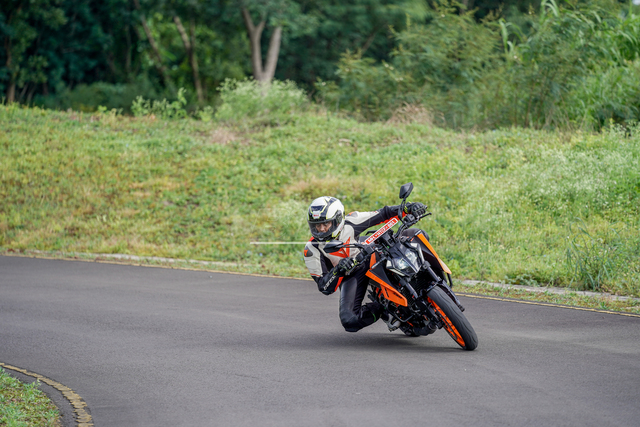
This is the best handling I have ever experienced astride a 390 Duke and it is possible due to a combination of multiple aspects. The new frame and engine have been packaged in such a way that the centre of gravity is low. The USD fork and monoshock are WP Apex units and both of them offer adjustability for preload and rebound. Then there is the reduction in unsprung weight thanks to the new wheels and braking equipment. As impressed as I was by the acceleration, I must admit that the deceleration is also equally impressive. The new radially mounted calipers offer a strong bite that can be delivered with precision. It encourages late braking and allows one to carry the brakes deep into a corner before capitalizing on the incredible power-to-weight ratio to rocket out of the curve. The wheelbase is three millimetres shorter than that of the motorcycle it replaces. It does feel a bit twitchy under hard braking but responds to steering input instantly and tips into a corner eagerly. At that point, the grip from the H-rated Metzeler M5 Sportec Interact tyres is reassuring and allows one to focus on the task at hand; corner-carving.
In a straight line, the new 390 is reasonably planted. The ride quality is certainly the best yet and the adjustability of suspension allows one to tune it to one’s needs. Although I did not do a lot of city riding, there was nothing to suggest that it would be beyond this motorcycle’s capability. One area where the new 390 Duke fell short is refinement, but it is a minor shortcoming when one considers its many virtues.
With all these upgrades, KTM have managed to price the new 390 Duke competitively. At Rs 3.11 lakh (ex-showroom), the price hike over the outgoing model is less than Rs 20,000. When the second generation of this motorcycle was launched, there were may who said they would rather pick up a first-generation model off the used market. Those people should ride this one. I am fairly positive they will put their money down for it right thereafter. The thrill/second ratio is simply too compelling.
Watch the full video review:
Also Read: Ultraviolette F77 Tested – Sedate and Sporty

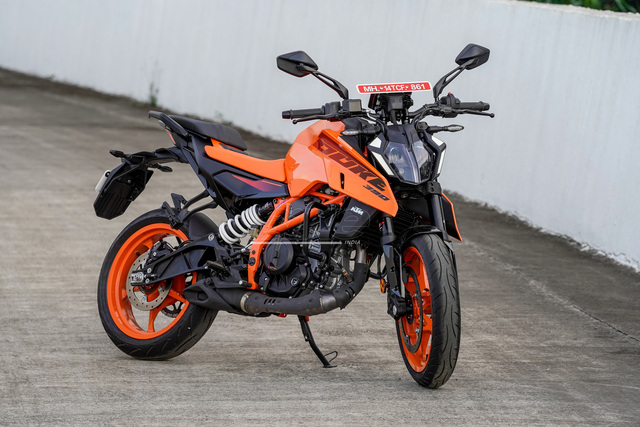
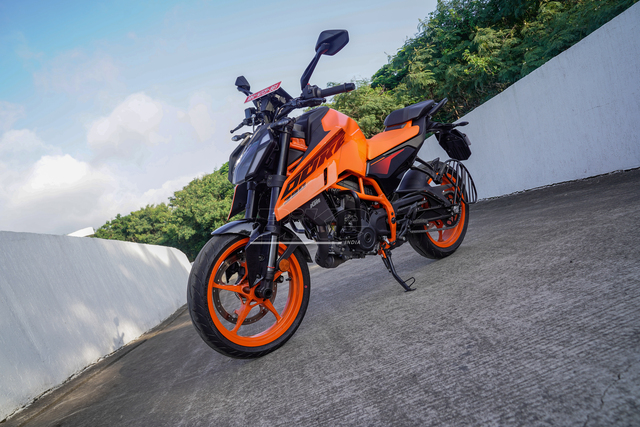

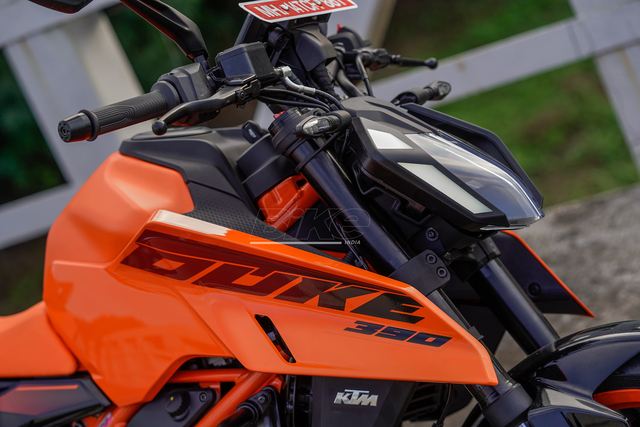
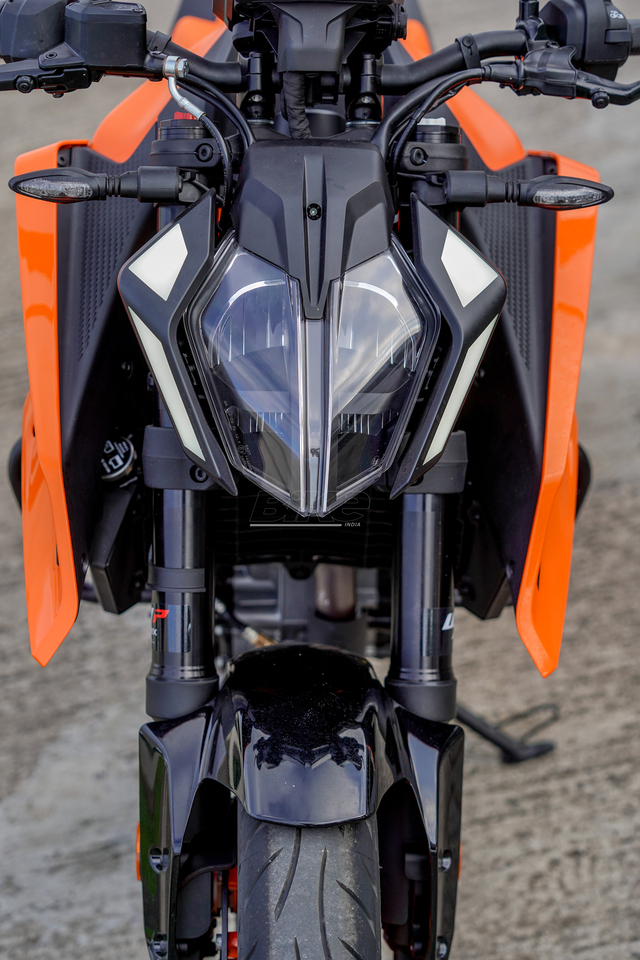
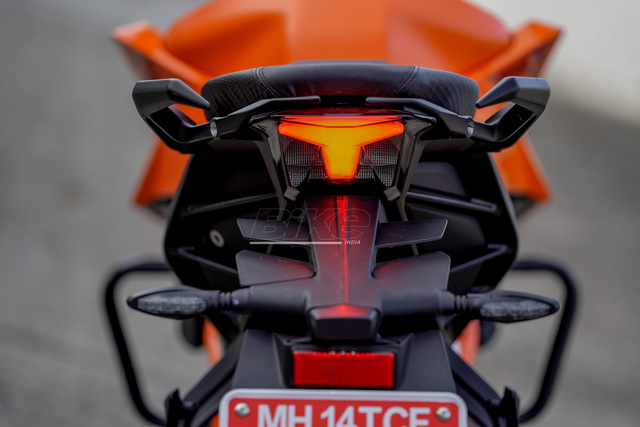
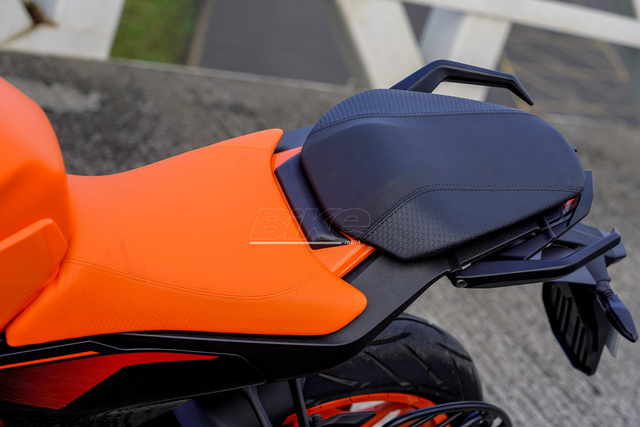
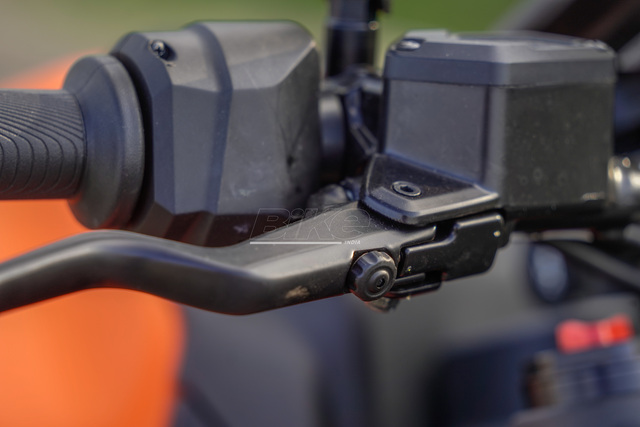
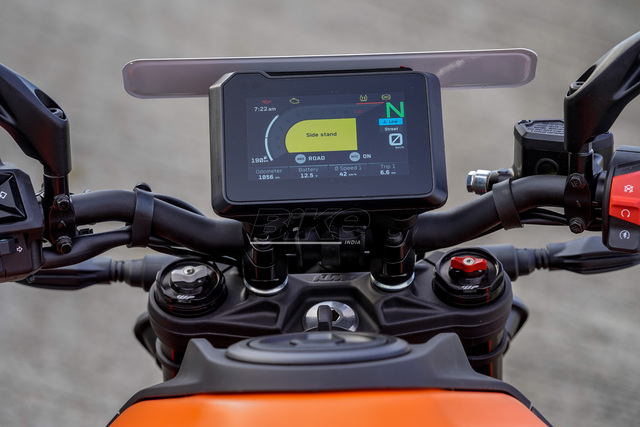


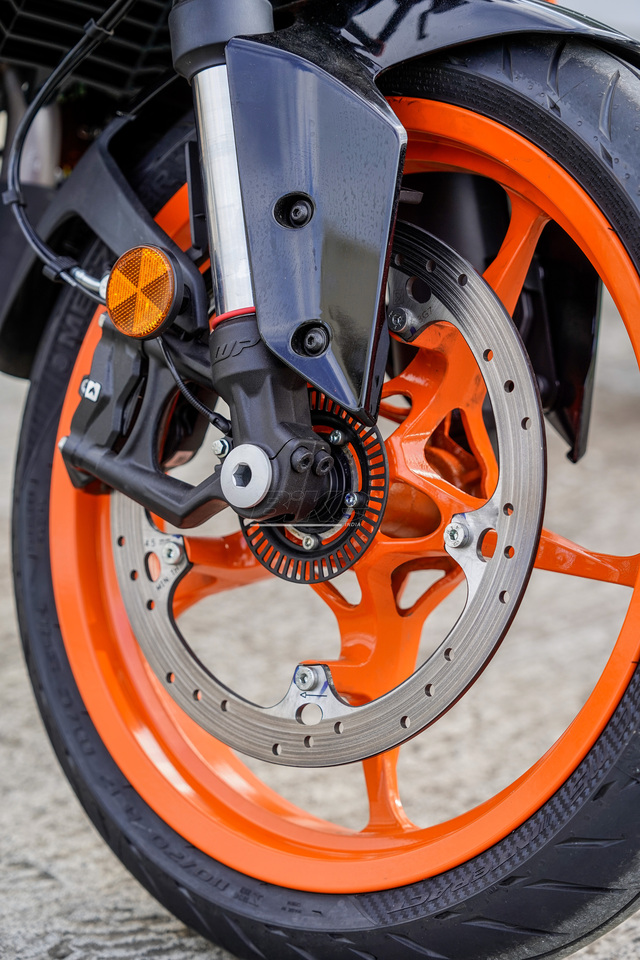
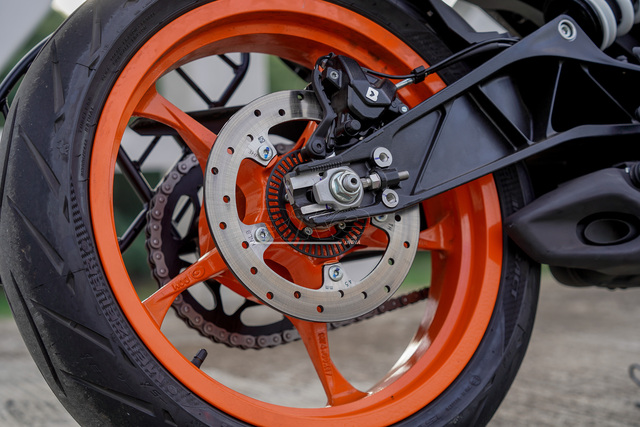

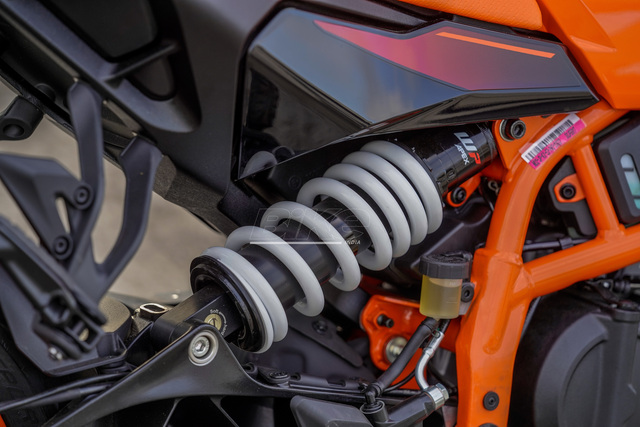

Leave a Reply